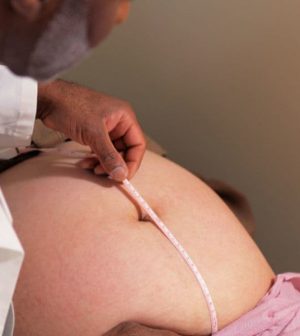- Skip Storing This Everyday Product in the Fridge Door
- Green Tea + B3 Pairing May Boost Brain Health
- Navigating Your Midlife Crisis: Embracing New Possibilities
- City Raccoons Showing Signs of Domestication
- Mapping the Exposome: Science Broadens Focus to Environmental Disease Triggers
- One Week Less on Social Media Linked to Better Mental Health
- Your Brain Changes in Stages as You Age, Study Finds
- Some Suicide Victims Show No Typical Warning Signs, Study Finds
- ByHeart Formula Faces Lawsuits After Babies Sickened With Botulism
- Switch to Vegan Diet Could Cut Your Greenhouse Gas Emissions in Half
C-Section Rates Have Nearly Doubled Since 2000: Study

The number of women delivering babies via cesarean section has nearly doubled worldwide since 2000, to about 21 percent, new research shows.
That’s significantly higher than the 10 percent to 15 percent considered medically necessary, researchers said.
When complications develop, C-sections can save the lives of mothers and their babies. But the surgery is not risk-free and has been linked to difficulties with future births.
“The large increases in C-section use — mostly in richer settings for nonmedical purposes — are concerning because of the associated risks for women and children,” said Dr. Marleen Temmerman, lead author of three studies published Oct. 11 in The Lancet.
Temmerman is a professor of obstetrics and gynecology at Aga Khan University in Nairobi, Kenya.
Worldwide, C-sections rose nearly 4 percent a year between 2000 and 2015, the study found. That translates to 16 million of the 132 million live births in 2000 and 30 million of the 141 million live births in 2015.
The fastest rise (6 percent) took place in South Asia, where researchers said C-section deliveries were underused in 2000 but overused 15 years later.
C-sections were also overused in the United States, Canada, Western Europe, Latin America and the Caribbean, where rates rose about 2 percent a year over the study period of 2000 to 2015. In North America alone, C-section births rose from about 24 percent to 32 percent during that time span, the study found.
Fifteen nations, including Mexico and Cuba, had C-section rates that topped 40 percent.
Some women choose an elective cesarean delivery because it allows them to skip the pain and uncertain timing of natural labor. A C-section is medically necessary when complications develop such as bleeding, high blood pressure or the baby is in an abnormal position in the womb, endangering mother or child.
But the procedure is unavailable to many women in low-income countries and overused in many middle- and high-income countries, the researchers found.
Six out of 10 nations do too many C-sections and a quarter perform too few, the study found. Moreover, wide differences exist between rich and poor, public and private sectors, and between regions, the researchers said.
“In cases where complications do occur, C-sections save lives, and we must increase accessibility in poorer regions, making C-sections universally available, but we should not overuse them,” Temmerman said in a journal news release.
For the three studies, researchers used data from 169 countries in World Health Organization and UNICEF databases. One study dealt with disparities around the world. A second looked at the harms of overuse and underuse of cesarean delivery, and the third at ways to curb unnecessary ones.
Publication of the three studies coincided with their presentation at a meeting of the International Federation of Gynecology and Obstetrics, scheduled to begin Sunday in Rio de Janeiro, Brazil.
More information
For more on cesarean birth, visit the American College of Obstetricians and Gynecologists.
Source: HealthDay
Copyright © 2025 HealthDay. All rights reserved.










